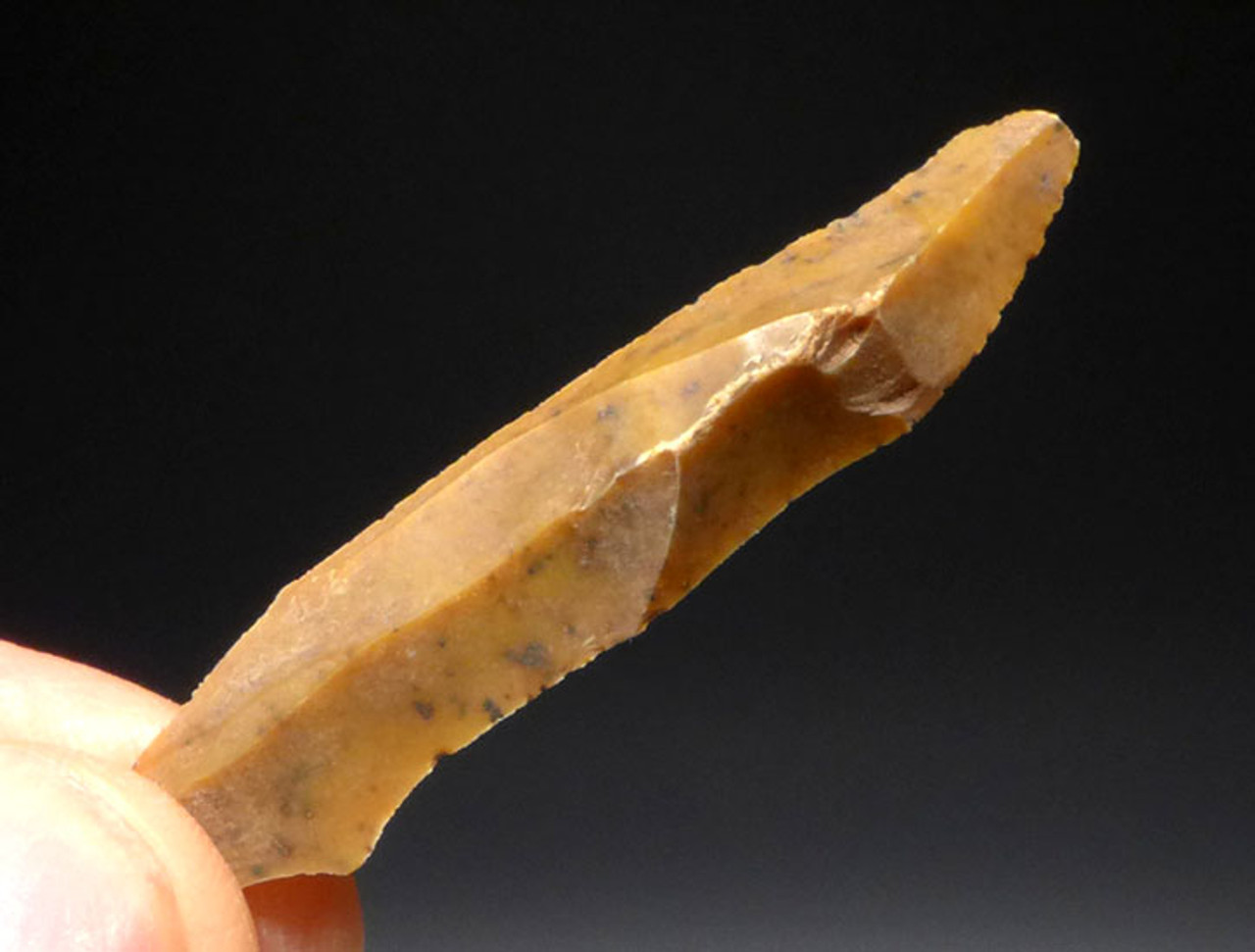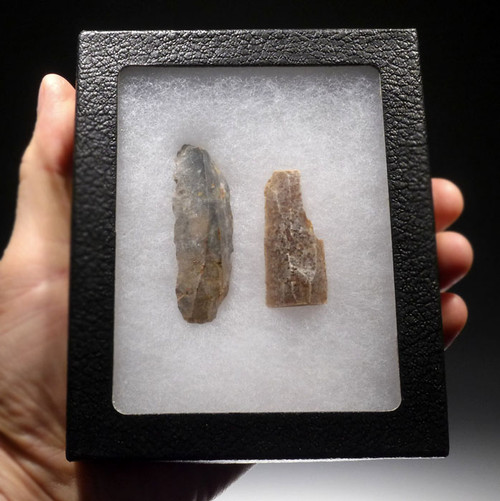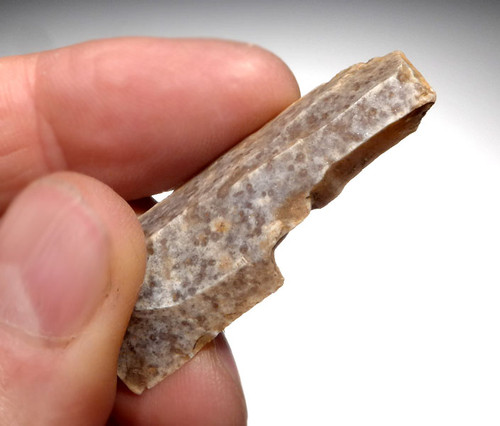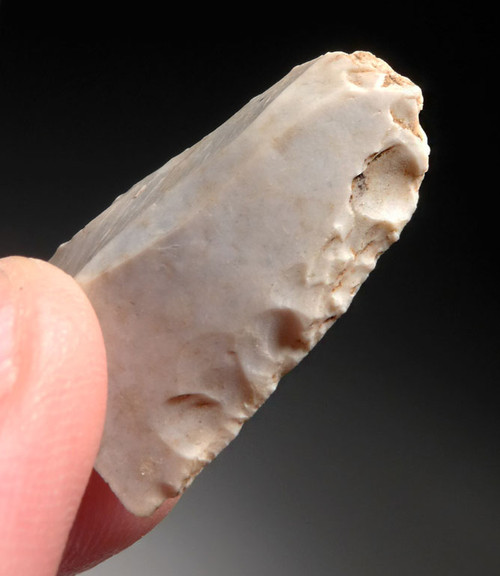Product Description
This is a RARE set of two MAGDALENIAN FLAKE TOOLS. Both are super delicate STRUCK LEAF BLADES with one WITH REDUCED END FOR HAFTING. Both of these tools are complete, spectacular examples and show evidence of use. These tools were made by Cro-Magnon humans who once lived in this famous decorated cave site which had been earlier, occupied by Neanderthals during the Mousterian Tool phase. An excellent collection set with traits only found on authentic specimens, mineral and sediment deposits throughout.
No collection of Paleolithic tools would be complete without the inclusion of examples dating to the Upper Paleolithic Period. This was an era of many of the most famous human development milestones. In this period, the technology developing around the planet took place at slightly different times but globally, humanity was taking a huge turn for the better, and in overall unison. A new level of tool production and craftsmanship emerged unlike ever seen before. Modern humans first arrive on the scene and with them, they bring many new inventions - most notable is the concept of artistic expression as seen in the famous cave paintings that were only produced in this era.
HISTORY
The Grotte du Placard or (the Placard Cave) was first discovered in 1853. It is a very famous prehistoric cave in Charente, France bearing art made by humans over 17,000 years ago. It is one of the most important caves housing prehistoric cave art with abstract signs (aviforms), dating back to the era of Solutrean art. Traditionally grouped together with three other archeological sites of Franco-Cantabrian cave art, all four of the sites contain similar bird-like abstract symbols. The other sites include Pech Merle Cave (25,000 BCE), Cougnac Cave (23,000 BCE), and Cosquer Cave (25,000 BCE). Because Placard Cave is the only one of the four rock shelters whose rock art has been directly dated (to 17,500-18,000 BCE), the strange aviforms it contains are now known as "Placard-type signs", even though the earliest art of this type was created at Pech Merle, during the Gravettian.
The Grotte du Placard has been extensively excavated with more than a dozen levels dating from the Middle Paleolithic to later, higher levels, especially Magdalenian and Solutrean Periods. The French Association for the Advancement of Science funded early excavations in 1902. The subdivisions of the Upper Paleolithic presented by Henri Breuil the 1912 Geneva Convention are partly based on the results of excavations of the Grotte du Placard. Excavations were also done in 1958 by Jean Roche at the request of Jean Piveteau and again, in 1987 following the discovery of a reindeer and cattle engravings and a not yet excavated gallery. Human remains have been found in this cave including Neanderthal and mostly, Cro-Magnon. Many bones of Homo sapiens dating from the Solutrean ( Upper Paleolithic ) have been found, including skulls fashioned into cups. A frieze of about 5 meters long was excavated in 1990 on the walls buried in the Solutrean layer. The drawings are made by very fine incisions. Many horses, deer, ibex, deer, chamois, a saiga of cattle, aurochs and a two buffalo heads sticking out their tongues, are represented. Sieving the excavated material allowed recovery of 640 carved stones, which showed that all of the walls were engraved. A dozen "bird-shaped" signs are also present. Painted red, they are identical to those found in the caves of Pech Merle and Cougnac. This suggests a cultural group or a common artist(s) attended these remote caves of over 150 km apart. Similar signs were found in the Cosquer cave in Marseille, 500 km away.
 US DOLLAR
US DOLLAR
 EURO
EURO
 AUSTRALIAN DOLLAR
AUSTRALIAN DOLLAR
 CANADIAN DOLLAR
CANADIAN DOLLAR
 POUND STERLING
POUND STERLING






















